Wagner cast iron cookware is regarded by many as some of the finest examples of 19th and 20th century cast iron. Much of the cast iron is over 100 years old and still usable today. These antique pans are sought-after by enthusiasts who prefer vintage cast iron to newer pans. But identifying and dating these old Wagner Ware Sidney -o-pans can be tricky.
So, with this article, I hope to help you and other proud owners identify and give an estimate of the age of your cookware. You can also learn the history of your cast iron, which the Wagner Manufacturing Company manufactured.
Table Of Contents
- Wagner cast iron. “Why is it so collectible?”
- Learn the history of the Wagner Manufacturing Company.
- Where you can buy Wagner cast iron.
- Considerations when purchasing Wagner cast iron cookware.
- You can identify and date antique Wagner cast iron using trademarks and logos.
- Final thoughts on collecting vintage Wagner Ware cast iron.
But first, here is a quick look at the Wagner Manufacturing Company.
Identify And Date Your Wagner Cast Iron Skillets Using Logos. Also, Learn The Fascinating History Of Wagner Manufacturing.
Background To Wagner Manufacturing Cast Iron.
Founders | Milton M. Wagner and Bernard P. Wagner |
Operational Dates | The foundry in Sidney operated from 1891-1959 |
Located | The Wagner Manufacturing foundry was in Sidney, Shelby County, Ohio. |
Product Line | Wagner was one of the largest American manufacturers of cast iron products in the 20th century. Their product line included skillets, kettles, bean pots, Dutch Ovens, roasters, fruit presses, scoops, broilers, Griddles, waffle irons, muffin pans, and cornbread pans. The company also had a range of aluminum cookware. |
Wagner Brands | Wagner labeled their cookware under the following names: Wagner, Wagner Ware Sidney -o-, Wagner Ware, National, Long Life, Magnalite, Wardway, and Ward’s Cast Iron. |
Signature Products | Wagner is best known for the Sidney -O- range of skillets and Dutch Ovens. |
Reason For Closure | The reason for the closure of the foundry came from two fronts. Firstly, the Wagner family sold their interests in the company in 1953 to the Randell Company. Secondly, the company struggled financially because of a drop in sales. The decline in sales was due to two World Wars, the Great Depression, the development of new cookware materials, and the increase of lower-priced imports from Asia |
Wagner After Buyout (Non-Collectible) | In 1957, the Randall Company purchased long-term competitor Griswold from McGraw Edison. The Randall Company sold the cast iron businesses to Textron Corp in 1959. General Housewares Corporation bought Textron in 1969. In 1994, the production of Wagner Ware ended. |
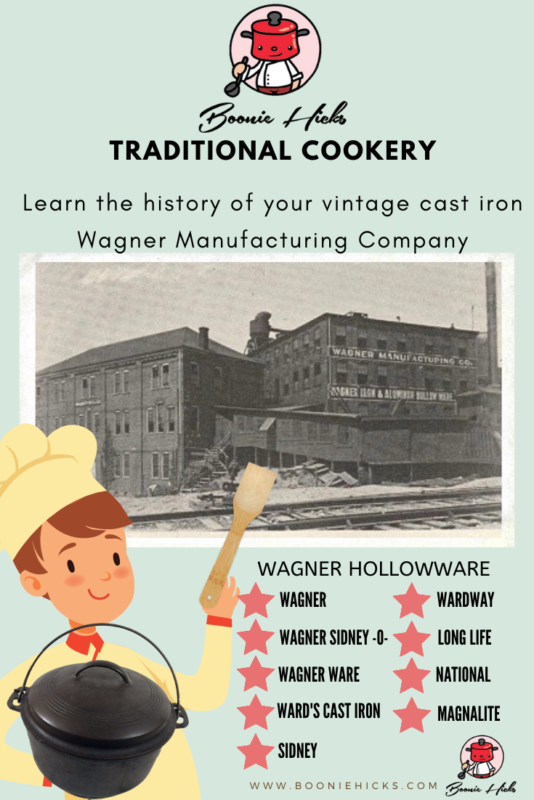
Why Is Wagner Cast Iron Collectible?
Super Smooth Cooking Surface.
Wagner cast iron is highly collectible. Like most antique cast iron, Wagner manufactured high-quality cookware for their entire range of cast iron products.
Unlike Wapak cast iron ironware, it often has characteristic casting flaws. Wagner cast iron tends to have a few casting flaws, resulting in very smooth cookware on both the interior and exterior of the cookware.
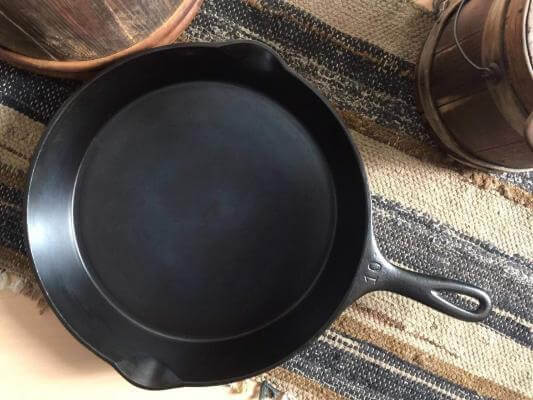
Focus On Quality
Imagine that workers would have worked on individual pieces of ironware. It was machined to smooth the interior and exterior of each pan. You can only see this level of detail in high-end cast iron cookware such as Le Creuset and Staub.
Today, Le Creuset and Staub benefit from combining traditional and modern manufacturing methods. However, the workers at Wagner could make cast iron cookware without casting flaws or bubbles. Must have taken great skill and attention to detail.
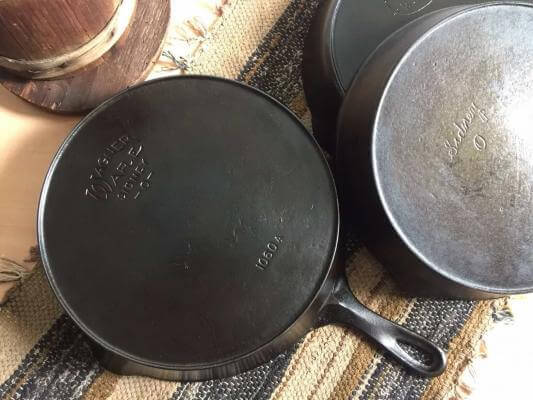
Wagner Made A Wide Range Of Cast Iron Cookware.
You can’t go wrong with an old Wagner cast iron skillet. It will serve you well for years, and they’re great fun. However, you may want to consider a Wagner Dutch oven. They are super smooth, and just like the skillets, they are reasonably priced. You can also buy cast iron muffin pans, which can be pretty cheap. But watch out for shipping costs that can increase the overall price drastically. Some of Wagner cast-iron cookware range includes:
- Dutch ovens
- Griddles
- Gem pans
- Waffle irons
- Skillets
You can even collect Wagner cast iron cornbread pans that look like corn cobs. Wagner Manufacturing also produced aluminum cookware, which must have seemed revolutionary.
Collect Your Favorite Logo.
If you want a vintage skillet, then Wagner skillets are a great choice. You can choose from sixteen different logos and trademarks or markings. I like pans with heat rings, while others may prefer a pan with a smooth base.
I think this wide selection makes Wagner cookware more collectible than other manufacturers, such as Vollrath and Martin Stove and Range, which manufacture a limited range of products.
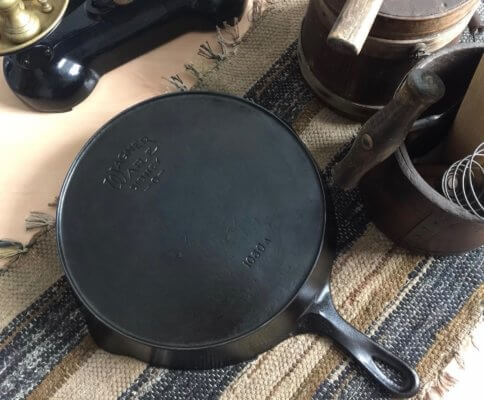
Wagner Manufacturing Company Focused On Quality Over Quantity.
Quality was a focus from the very start for Wagner Manufacturing Company. They even advertised this selling point to consumers. Old advertisements read;
We do not strive to manufacture hollowware as cheaply as possible but as well as it can be made. We cannot afford to put on the market ware that will not sustain our reputation. The name Wagner is on the bottom of each piece of ware.
Wagner Manufacturing Company History
Founders And Foundry
Who Founded Wagner Manufacturing? | Wagner Manufacturing Company was founded in 1891 by Milton M. and Bernard P. Wagner. However, two more Wagner brothers, Louis and William Wagner, joined the company in the following years. Another key player in the foundation of the company was R. Bingham. Bingham previously worked at Marion Stove Company and the Sidney Manufacturing Company. |
Where Was Wagner Cast Iron And Wagner Ware Made? | The company had its ironworks in Sidney, Shelby County, Ohio. Early cookware from Wagner Manufacturing had a simple Wagner marking on the back of the ironware. Wagner included Sidney O. in their cookware around 1895. The term Wagner Ware first appeared in the logo in the 1920s. |
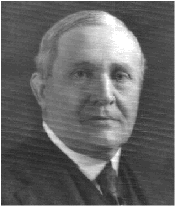
The Wagner Product Line Added Nickel Plating, Aluminum, And Magnalite.
Nickel-Plated Cast Iron | To complement their cast iron range, Wagner added a nickel-plated range. Unlike cast iron and copper pots, nickel plating does not react to acidic foods such as tomatoes, which can taint food. It’s easy to look past the development of nickel-plating. But, in the 19th century, bonding two metals together would have required much metal casting expertise. |
Aluminum Cookware | Along with nickel-plated cast iron, the Wagner brothers in 1894 manufactured a line of aluminum cookware, and Wagner Manufacturing was one of the first companies to do so. |
| Aluminum Cookware Exported To Europe | By 1913, Wagner cast iron and aluminum products were selling in Europe. |
| Magnalite | In the 1930s, Wagner manufactured a cookware line with a patented aluminum alloy called Magnalite. |
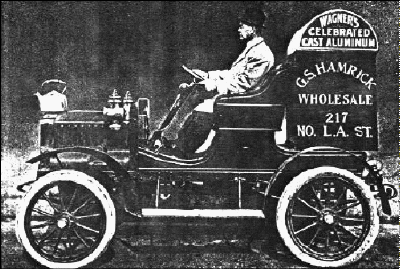
Wagner Manufacturing Buys Their Sidney Competition.
| Wagner Bought Sidney Hollowware Company. | In 1897, Wagner bought the Sidney-based competitor Sidney Hollow Ware Co. from the founder and owner Phillip Smith. Sidney Hollow Ware made high-quality cast iron cookware that was extremely light and smooth. Sidney Hollow Ware Co. was also an early adopter of nickel-plating cast iron. |
Why Did Wagner Buy Sidney Hollow Ware Company? | It was a brilliant idea to buy the Sidney Hollow Ware Company. After all, Wagner Manufacturing and Sidney competed in the same city and made comparable products. However, it was common knowledge that Smith made a tidy profit from his original investment in the foundry. To run the Sidney Foundry, William H. Wagner joined the family business to oversee the operation. |
Wagner Sold Sidney Hollow Ware Back To Phillip Smith. | In 1903, Wagner Manufacturing sold the Sidney Hollow Ware Company to the founder, Phillip Smith. Sadly, Phillip Smith did not reopen the foundry due to health reasons. |
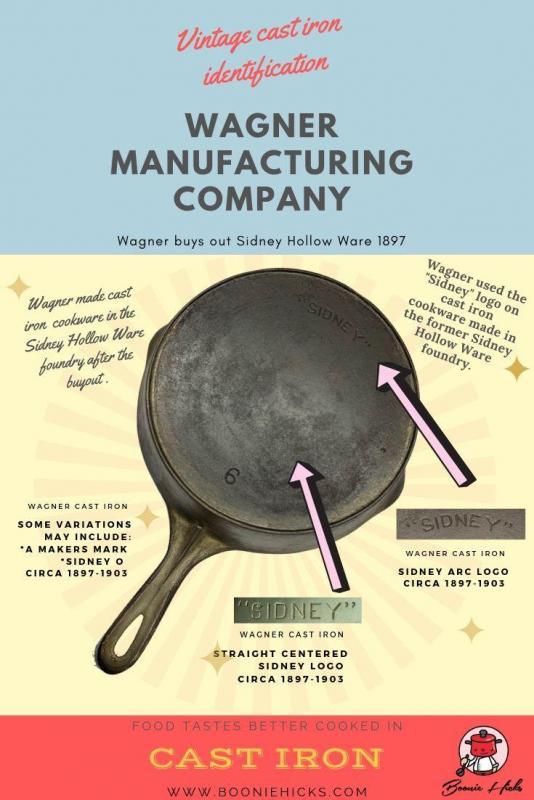
Wagner Introduced A New Product Line To Stop A Decline In Sales.
| The Great Depression (Magnalite) | I have to take my hats off to Wagner because they introduced a new product line called Magnalite in one of the deepest recessions the world has ever seen. Wagner Manufacturing was steadfast in making only quality products. For this reason, the cookware is collected and highly usable. |
| The Sales Decline | Wagner introduced Magnalite to stop falling sales at Wagner Manufacturing; it was not due to their product range. Magnalite was hugely popular, but it could not offset the effect of the worldwide recession. From 1929-1941, the US was in the grips of what we now call the Great Depression. Therefore, it was not only Wagner. However, many foundries struggled financially to survive. Many didn’t. |
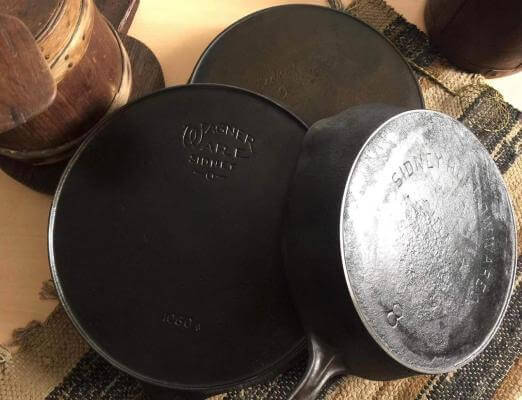
The Family Sells Their Interest In The Foundry.
Wagner Family Sells The Company To Randall Corp. | Wagner Manufacturing Co. lasted longer than many foundries. However, in 1952, Wagner was sold to the Randall Company. Unbelievably, the Randall Company was a car parts manufacturer. |
Textron Buys Randall | In 1959, another business called Tetron bought Wagner. Textron also purchases Griswold Manufacturing Company. At this date, cast iron enthusiasts consider this the end of Wagner Ware production. Wagner cast iron pans made after this date are considered not collectible. |
General House Wares | General Housewares Corporation in 1969 bought the rights of Griswold and Wagner. |
Is Wagner Ware Still Made? | With the world rediscovering cast iron cookware, will we see Wagner Ware skillets manufactured again? General Houses Ware stopped the manufacture of Wagner Ware in 1994. However, there is a glimmer of hope for Wagner Ware. In 2014, American Culinary bought both the Wagner and Griswold trademarks. So, fingers crossed, cast-iron fans may one day decide to manufacture Wagner cast iron again. |
Where Can You Get Your Hands On Some Wagner Ware?
- Grandparents (best deal and great to keep your heritage in the family).
- Antique stores (check online to compare the store price).
- Garage sales (rescue those poor skillets from the tip).
- Flea markets (search the markets for hidden gems).
- Online (largest selection available; however, asking prices can vary greatly.
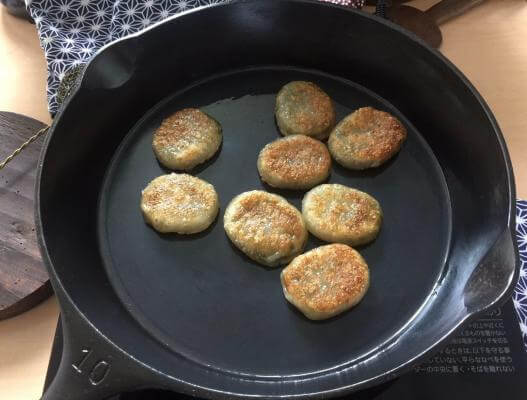
Buying Considerations Before You Buy Antique Wagner Ware
There Is Plenty Of Wagner Cast Iron Around, So Take Your Time.
There is no shortage of Wagner cast iron. Wagner had a large percentage of the cookware market back in its heyday. And plenty of fantastic Wagner skillets and Dutch ovens are in excellent condition.
What Size Skillet Or Dutch Oven Suits Your Needs?
The first thing you may want to think about is the size you need. There are often plenty of #8 skillets around. This size seems to be the most common for Wagner skillets and other vintage cast iron manufacturers, such as Favorite Piqua.
Inspect Carefully Since A Lot Of Wagner Ware Is Nickel-Plated.
Check the cookware carefully. The Wagner Manufacturing Company was an early adopter of nickel plating. However, most of Wagner cookware is unplated iron. Heavy seasoning may hide nickel plating. Nickel-plated can wear off or be patchy in places. Take a close look before purchasing.
Would You Like A Wagner Ware Skillet With A Smooth Bottom Or Heat Ring?
Do you want a pan with a smooth bottom or one with a heat ring? The older Wagner Ware skillets will have a heat ring, while the later-made pans have a smooth, flat base. It is a personal preference. I tend to like the older skillets with heat rings. They have more character, but the smooth-bottom Wagner cookware tends to be a little cheaper. And they are great cooking pans, too.
Does The Cookware Sit Flat?
As with all antique cast iron, asking the seller if the pan sits flat could be a good idea. A lever base is practical if cooking on a flat surface such as induction or glass.
Learn To Date And Identify Your Wagner Cast Iron Using Logos And Markings.
Although I’ve researched carefully, please only use the dates as an approximation.
Wagner cast iron cookware, to my knowledge, has sixteen known logos, brands, or markings. These include:
Straight Wagner Logo 1890s-1915
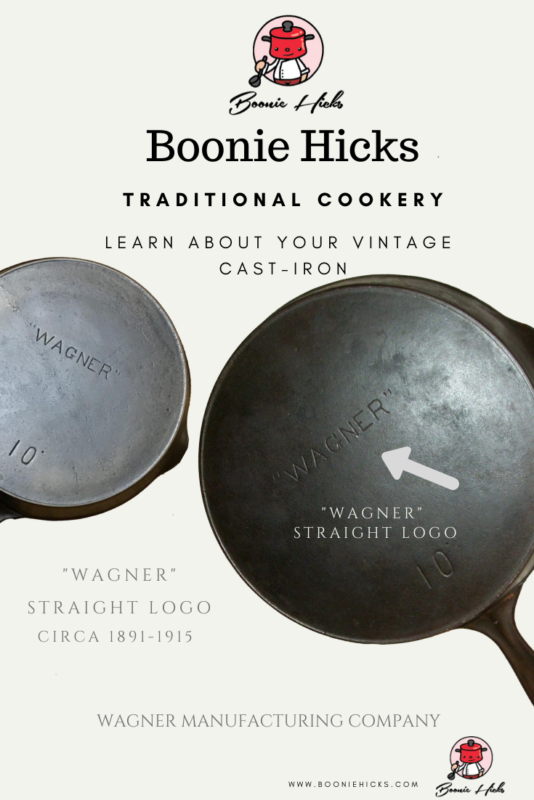
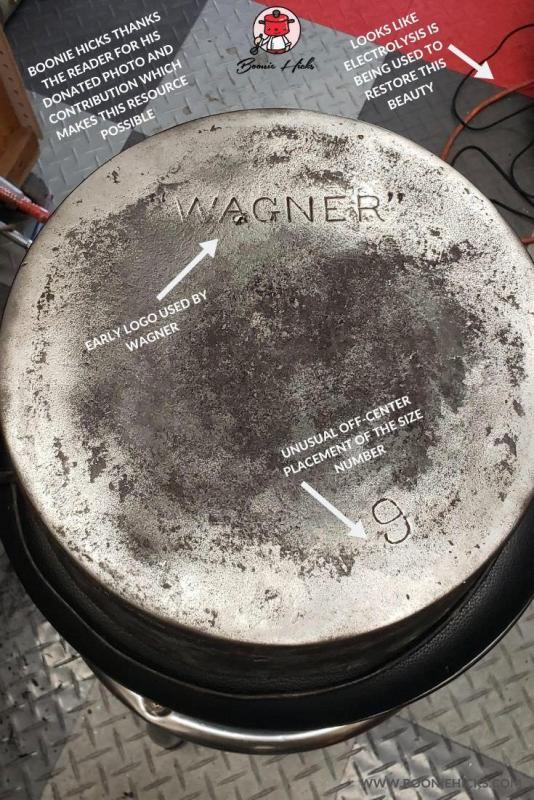
Wagner Arc Logo 1891-1910
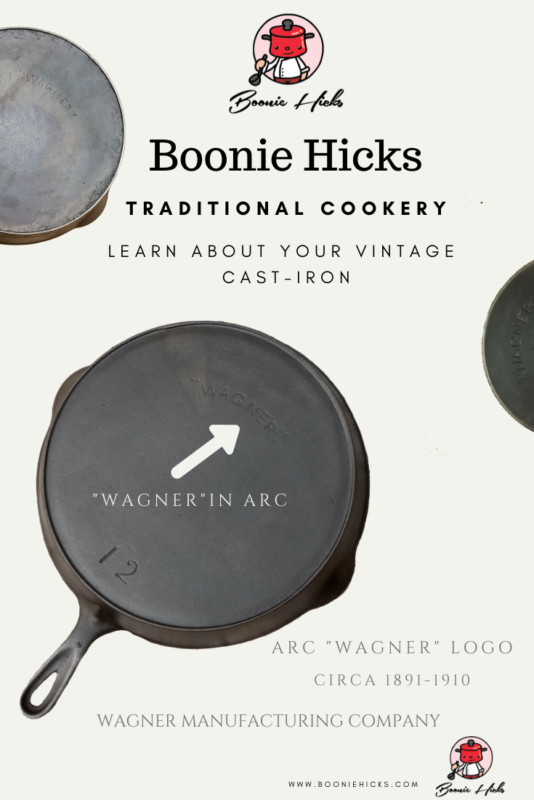

Double Arc Wagner Sidney O 1895-1915
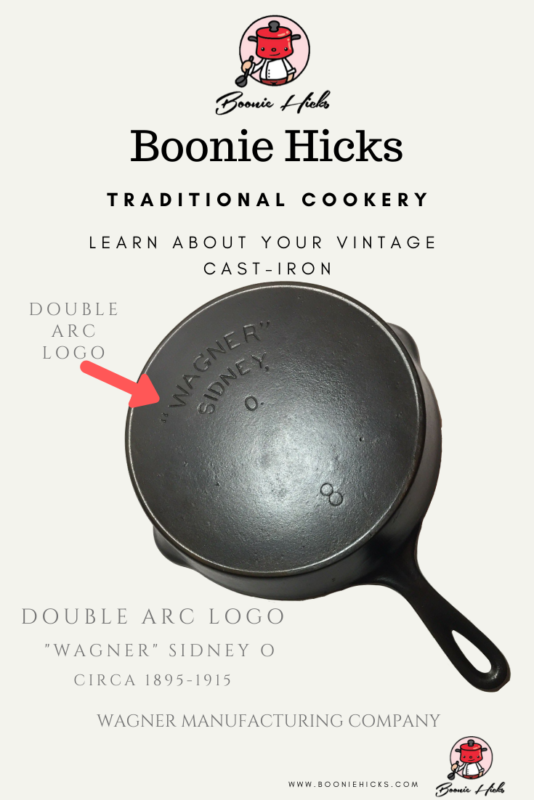
Sidney Arc logo Circa 1897-1903.
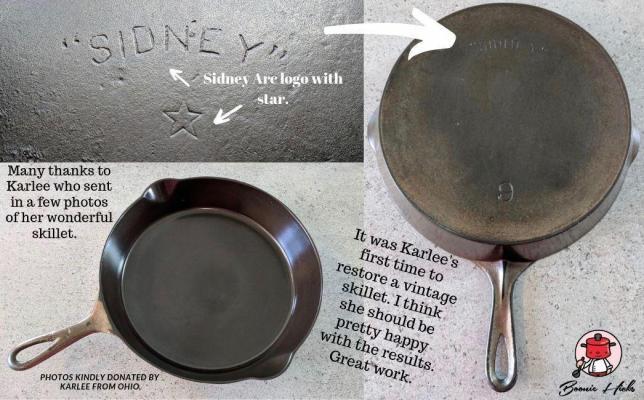
Straight Sidney Logo Circa 1897-1903.
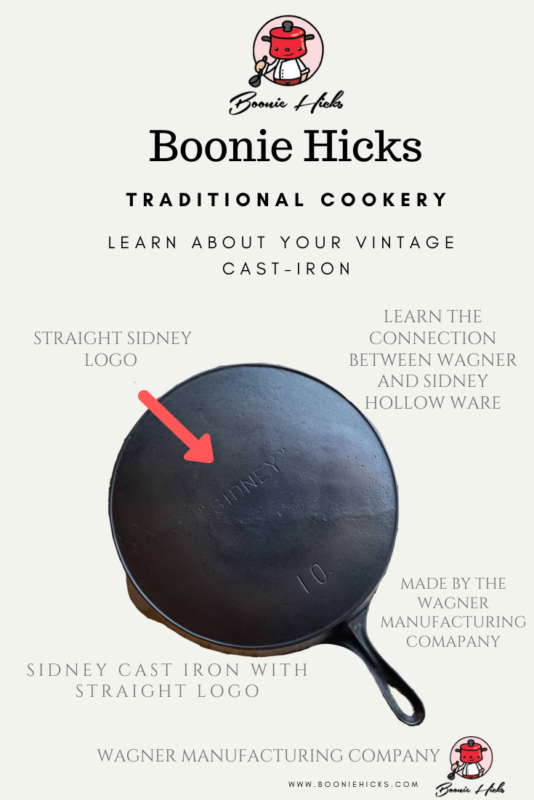
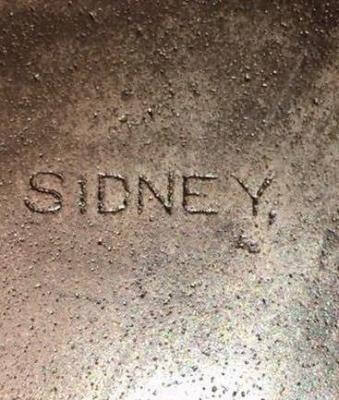
Straight Wagner Sidney O. (Centered.) 1910-1915
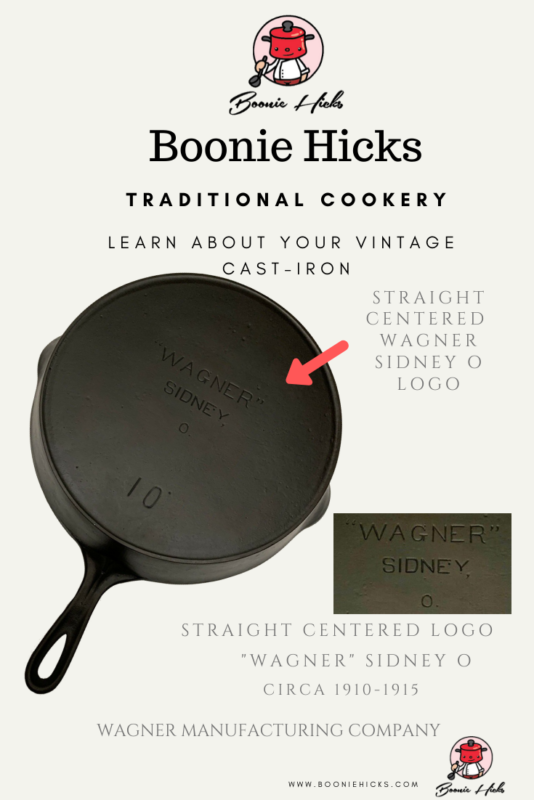
Wagner Sidney O. Wagner Slightly Arced While The Sidney Lettering Is Straight. Circa 1915-1920s
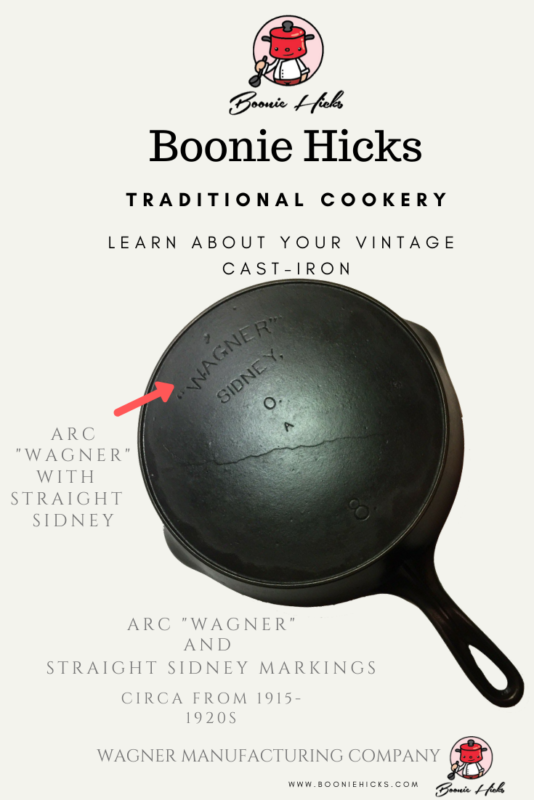
First Wagner Ware Sidney O. With Arc Wagner And Straight Ware And Sidney. Circa 1920s.
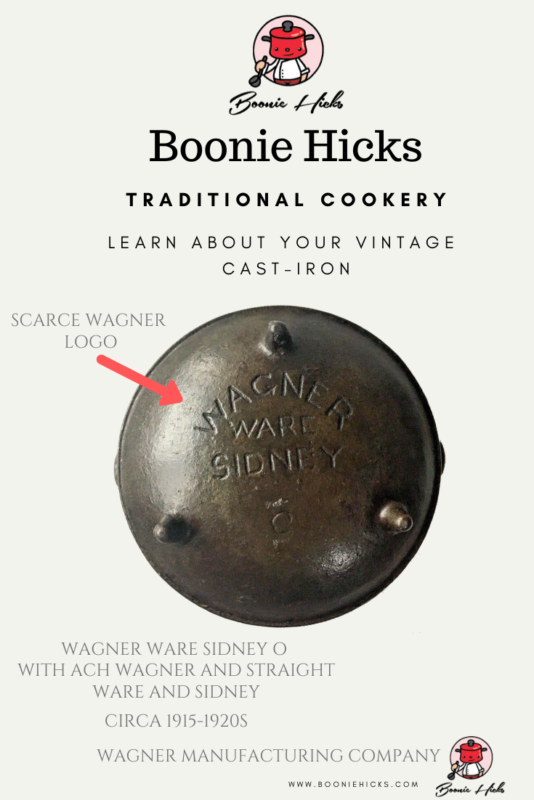
Stylized Wagner Ware Sidney O. for regular skillets. Circa 1920-1924 with heat ring and single-digit size number. 1924-1935 with a heat ring and a four-digit pattern number. Around 1935-1959, for skillets with no heat ring.
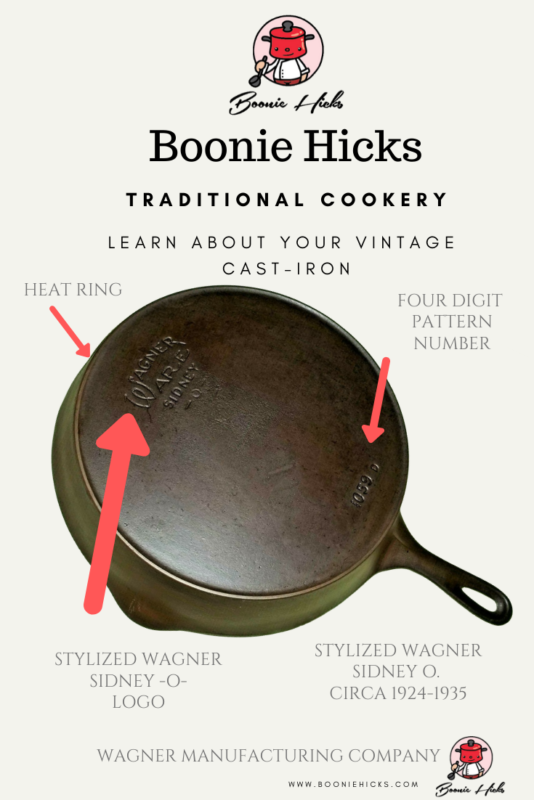
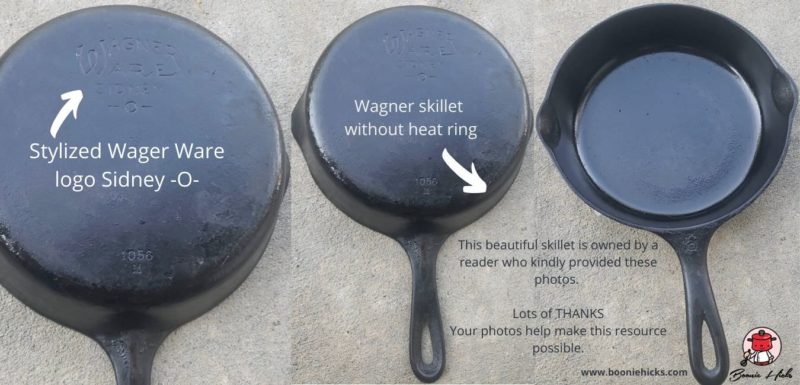
Centralized Stylized Wagner Sidney O. 1924-1935 With Heat Ring.
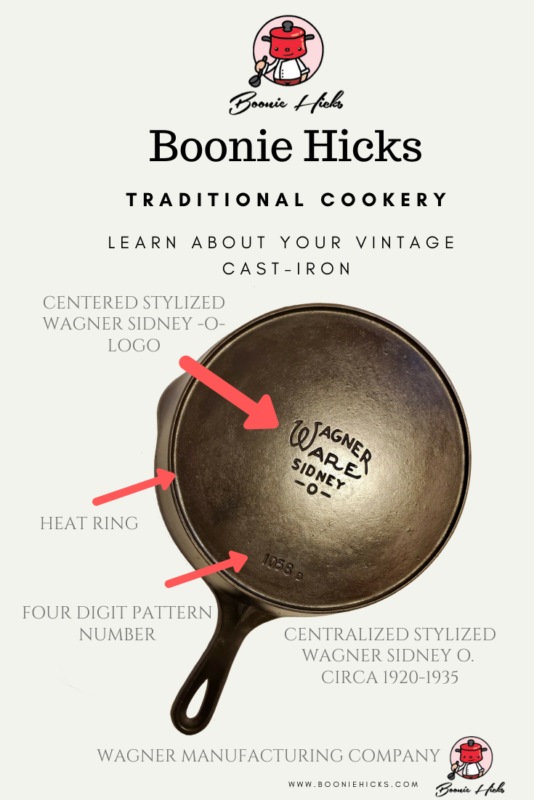
Pie Logo 1924-1934. However, Manufacturing Dates Are Uncertain.
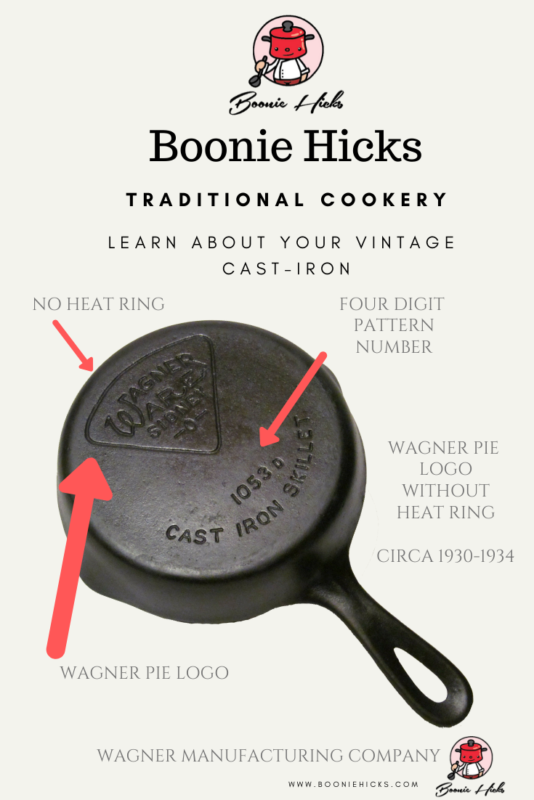
National Cast Iron Dates Between 1914 and 1940s
There are several different versions of cast iron with the National marking. Wanger marketed the Nation brand as entry-level cookware for budget-conscious consumers. Wagner made the National line circa 1914 to 1940.
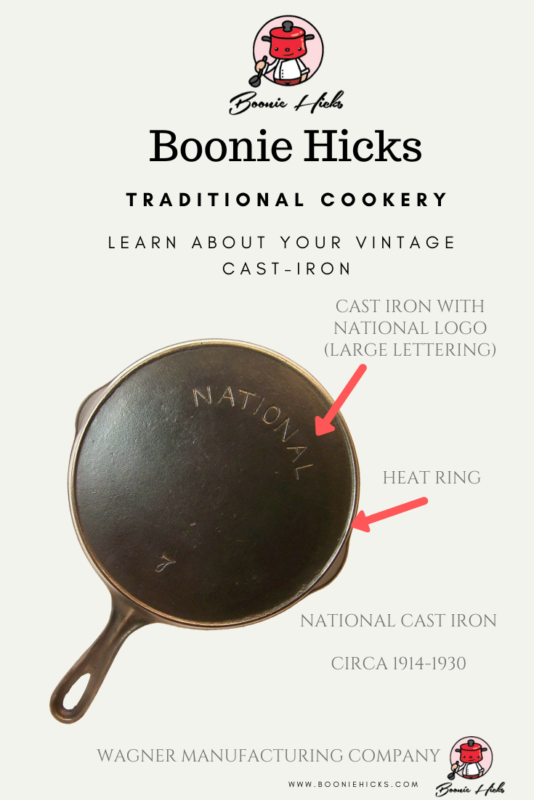
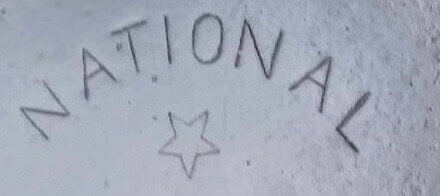
Long Life Logo 1930s.
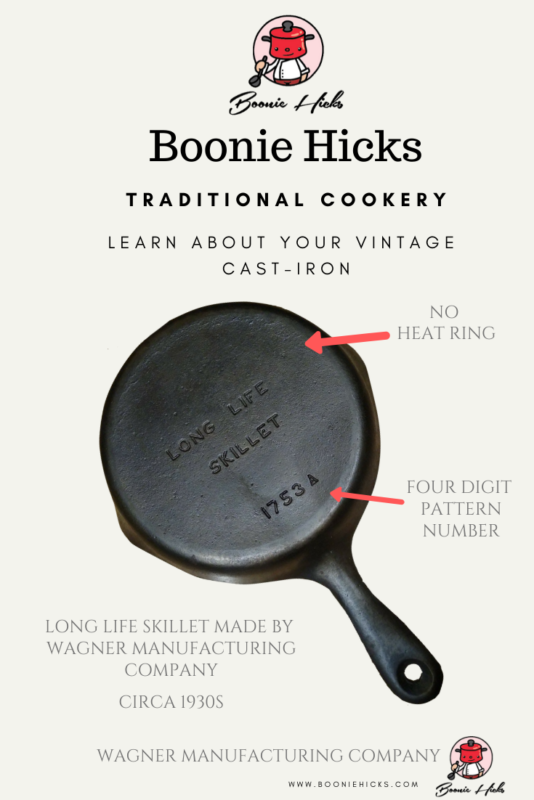
Wardway and Montgomery Ward. The Montgomery Ward Department store contracted Wagner Manufacturing Company to produce an in-store label. Circa the 1930s.
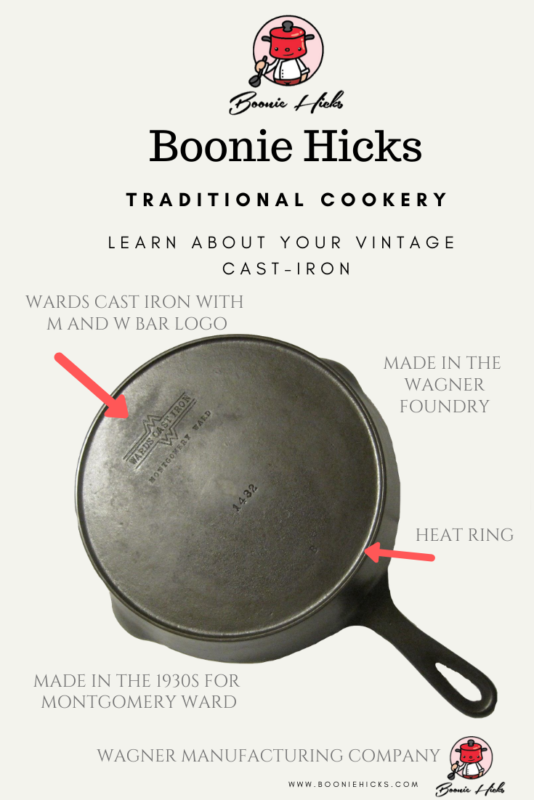
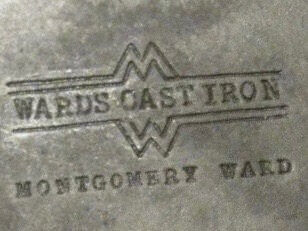
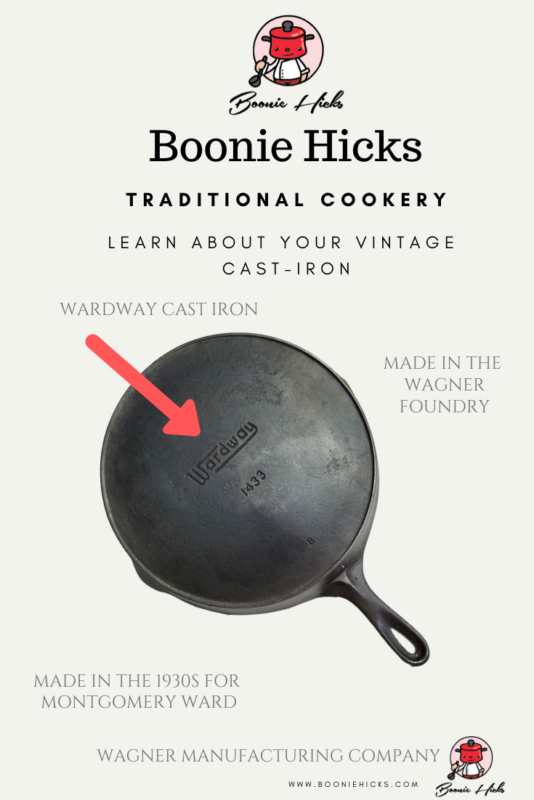
Final Thoughts On Wagner Cast Iron.
Fortunately, Wagner cast iron is more straightforward to date than other foundries of the time. Wagner Ware also has a huge collector base, so dates are well documented. The Cast Iron Collector is a valuable online resource for enthusiasts. Also, there are Facebook groups where you can share your love of cast iron cookware.
The Wagner Manufacturing Company was known for quality over quantity. Therefore, it has a good reputation for making trustworthy products.
Today, collectors and enthusiasts seek out Wagner cookware. However, you don’t need to be a collector to enjoy vintage cast iron. Here are six reasons why Wagner Ware is excellent ironware.
Although many cast iron enthusiasts look for Wagner-made skillets. But you’re not limited there. Wagner Manufactures a wide selection of cast iron cookware. You may find yourself becoming interested in:
- muffin pans
- Dutch ovens
- Scotch bowls
Since Wagner made some of the finest cast iron of the 19th and 20th centuries, Wagner ironware is still sought-after by cast-iron fans and hobbyists alike.

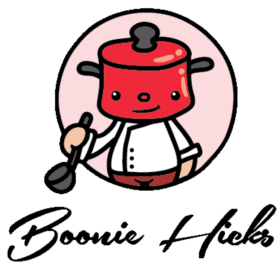
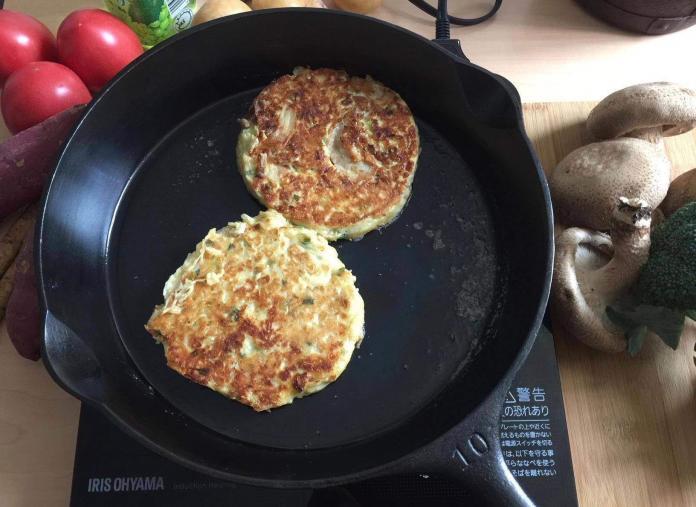
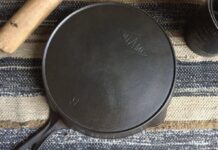
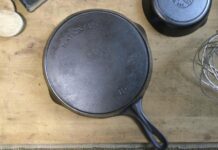
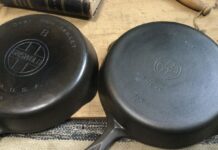



We were recently given a waffle iron that was my grandmother’s, but possibly her mother’s. We are trying to date it. Do the same “rules” apply to the looks of the logo as on the skillets? This has the patent date of Jul 26, 1892. It is a size 8. There were once wooden handles that attached to the “screws” that are a part of each side of the waffle iron. One iron is stamped with an F, the other with a G.
Hi Heidi
Thanks for your question.
You have a wonderful piece of vintage ironware. And you’re right it’s an old-timer. It looks like Wagner received several patents for their designs on Jul 26, 1892. Including square, rectangular and circular models. However, these waffle iron have a similar date of manufacture. I’d say circa 1890s-1915.
I trust this helps and I hope you get a lot of enjoyment from your waffle iron.
Our grandmas old cast iron (mom said it’s been around as long as she knows(before she got it)she’s 88! says
Wagner ware Sidney 0 with 7 on the bottom. Not the fancy W.
Round roaster
Lid has patented dec,4,17
Mch-8-21
Mch,14-22
Feb,10-20
7A in the center of a double starburst
Just got curious!
Made a great blackberry cobbler! Yum!
Hi Mary
Thanks for getting in touch and I guess, grandma is very happy you are treasuring her Round Roaster.
The patent dates on the cover can give a good indication on when your roaster was made. And Grandma is right, it’s close to one hundred year old. I believe these ovens were made in the 1920s before the introduction of the stylized logo.
Hope this points you in the right direction and happy cooking.
Hello – I have really enjoyed reading up on the history of Wagner Ware cast iron. I recently found and re-seasoned a long griddle that was my grandparents. It has the stylized Wagner Ware SIDNEY -O- on the top part of the underside and then 1149 on the bottom part. It it also has a heat ring on the underside. My family is guessing it’s date range is 1930’s. Thoughts on the date range? It makes some amazing pancakes! And has been a great addition to our cast iron collection.
Hi Teresa
Good on you for restoring your grandparents griddle.
You’re spot-on with the age of the griddle. It sounds like the griddle has reinforcing on the base, in the shape of an X connecting to a circle. I believe Wagner first introduced this version of the long griddle in the 1930s and continued throughout the 1950s.
Thanks Teresa, hope this helps.
Hi Boonie,
I am so excited to find this site! I recently inherited my mom’s Wagner Ware Sidney -o- skillet. It is marked with 1058 near the base of the handle and I’m wondering what year it was made. It has a stylized logo and no fire ring. Thank you for any info!
Hi Anita
Thanks for your getting in touch. Sorry, I accidentally responded to your first contact further down the comments section by mistake.
Hey, your mum will be so happy, that you are taking care of her skillet. I believe your Wagner skillet was manufactured between 1935-1959. So it’s a true vintage piece.
Cheers Anita, enjoy your skillet.
I think my skillet is yet another logo style. It has the stylized Wagner logo, near the top of the pan. It also contains the name of the skillet, size and 5 digit skillet number. How can I attach photos?
Hi Shelia
Thanks for getting in touch and it’s always exciting to see photos of old ironware. And you’re welcome to send the photos to booniehicks@gmail.com
From there I can see what you have.
Cheers Shelia, have a good day.
What a fantastic site! Thanks for sharing all this great info.
So I found a Wagner 8″ skillet at Value Village today but I don’t see its logo on this page – WAGNER (arced) over ARE (straight), but no SIDNEY, a 5 on the handle, and at 6:00 there’s 8 INCH SKILLET and MADE IN USA then at the very bottom a G (or maybe a 6?).
I guess it’s not really collectible per se, but I was happy to find it! Would it be from the 60s?
Hi Lynne
Thank you very much, it’s very motivating when I hear from people enjoying the site. Hoping to expand in to traditional recipes later on, and that will be a lot of fun.
It’s an interesting question, and would you believe, I just had another reader inquire about his fathers skillet with the same logo.
It sounds like you know your vintage ironware. You’re spot-on with the date. I believe you have a pan made by General Housewares Corporation. The company made Wagner Ware in 1960s-1990s. But from your description I believe you have an earlier logo, circa 1960s-1970s.
Although not as collectable as the old-timers, I’m sure it’s going to cook up a storm in your kitchen.
Happy cooking
Hi, Great article! it was a very good read.
My dad gave me a Wagnar cast iron pan a few years ago. He said he has had it along time. I can’t figure out its date though. It has Wagnar Ware written on the back of the pan furthest from the handle with the W used for both wagnar and ware. On the back closest to the handle it says 8 inch skillet made in USA. But on the front at the base of the handle it has a 5. Any ideas? Is there any way I can send you photos of it?
Thanks
Hi Billy
Thanks for your kind words of encouragement, I’m really happy you enjoyed the article.
It’s fantastic you’re researching your dad’s ironware. It sounds like your skillet was made after 1960. I estimate, late 1960s-1970s. It wasn’t made by the original Wagner family and foundry. Instead it was made by General Housewares Corp, a company that owned the rights to produce Wagner Ware during this time.
The number on the handle was used when people cooked on wood stoves. And would stop the pan from moving around.
But you’re welcome to send in few pictures of your pan, I’d love to check it out. Here’s my email address: booniehicks@gmail.com
Cheers Billy
Hi, I have a centralized block letter “Wagner” logo nickel plated with heat ring 6 inch skillet (6 is stamped near the edge by the handle). Any ideas of age?
Hi Jeff
Thanks for getting in touch, and I hope you are getting a lot of use out of your skillet.
The block “WAGNER” without Sidney -O- is an early logo. And I believe these skillets were manufactured circa 1890s-1915. Wagner made regular cast-iron and plated cast-iron skillets at the same time. But your welcome to cross reference your logo with the logos in this guide.
Cheers Jeff, hope this helps.
I just got a very nice cast iron pan from an eBay seller, and I’m wondering if it could be an unmarked Wagner. It’s 3-1/4″ deep. On the back near the bottom it says 10-1/2 inch chicken fryer, with a P centered below that at the very bottom. There’s a P on the back of the handle near where it joins the pan, and an 8 on the top of the handle.
There’s also kind of an odd shaped piece on the bottom of the handle where it joins the pan, looks like a little brace, for lack of a better word. Your thoughts, please?
Hi Jeannie
Thanks for getting in touch. And you’re right, your chicken fryer sounds like an unmarked Wagner.
The size and location of the wording is an indication of post-1960 Wagner. Does it have MADE IN THE USA marking as well? Because the reinforcing tab, as you know, is unusual. And I think it was made after 1960.
I suspect your chicken fryer was made by General Housewares Corporation. When they had the confidence to alter the original Wagner/Griswold molds.
I’m inclined to date your pan from the 1970s rather than the unmarked Wager Ware pans using Griswold molds in the 1960s.
I hope this points you in the right direction.
Cheers.
Hey there, Wayne Sawyer again. I’ve acquired a heavily carboned frying pan with only the letters SK visible. I am sure that there is no I after them that would begin to spell “skillet”. Any ideas what the SK might be? There don’t seem to be any other markings, although it is very gunky and the gunk could be hiding something.
Hi Wayne
It’s great to hear from you. And it sounds like you’ve found another interesting piece.
I believe the SK stands for skillet on old Lodge pans. And I suspect the pan also has a heat ring and was most likely made in the 1950s. If you find Made In The USA, then it’s a 1960s pan.
Have fun restoring your pan.
You are right. I should have mentioned the heat ring. Wayne
I bought a Wagner Ware Sidney 0 that has the heat ring and the number 10B on the bottom for 5 dollars.
I was literally going to give it to my patient to make cornbread. HOWEVER, my husband said. Are you crazy? It’s so heavy, I need two hands to hold it. That’s why I was giving it away. I’m thinking 1920’s?
Hi Elicia
Thanks for getting in touch and sharing your purchase with us.
Wow. Very exciting, it sounds like you have an early Wagner skillet. You didn’t mention a four digit pattern number. This is another indication of an early pan.
You’ll be able to compare the logo on your skillet with the examples on this identification guide. But from your description it’s sounds like you have an early Wagner with stylized logo, circa 1920-1924 but if it has quotation marks, it’s an earlier pan.
And for five dollars, that’s an absolute bargain. Larger skillets such as the #10 are sought-after by collectors and sell for higher prices.
Secretly, it sounds like your husband has his keen eye on the skillet. And I wouldn’t blame him. Early Wagners are beautiful pans.
Well done on your find.
I have a Dutch Oven that was my grandmothers. The lid has Wagner Ware but the pan only says 5qt. Any thoughts about what this really is?
Hi Kelly
Thanks for getting in touch.
I’m sure your grandmother is very happy that you are researching her old Dutch Oven. It’s interesting the lid is marked while the base is unmarked. But from your description I believe the Dutch Oven is also a Wagner.
Cheers, have fun using your vintage ironware.
I found a skillet at a garage sale . On the bottom at the top says Wagner, under that with the same W says Ware and under that says Sidney and under that -0-. On the bottom 1055C. On the front on the handle is number 5. Can you tell me something about this skillet? I have restored it and seasoned it 4 times with Crisbee.
Hi Darlene
Thanks for getting in touch.
With four layers of Crisbee I’m sure your skillet looks fantastic. That would have taken a lot of time and effort. But I bet your skillet has a nice even layer of seasoning.
Your skillet has the Wagner Ware stylized logo and it was an extremely popular. It also has a pattern number and this places your skillet circa-1920s-1950s. Unfortunately, the pattern number gives no indication of the date of manufacture.
Is the skillet completely flat on the base? If so, you have a skillet with a smooth bottom. Wagner manufactured these skillets circa 1935-1959. It might take 30 seconds to load, but you’ll be able to confirm the dates using the reference guide on this page and compare your skillet with the pictures.
Cheers Darlene, I hope this helps.
Boonie,
I hate to hit you with another question after just recently asking you, but… I’ve just received a Wagner Ware Cornbread skillet, with a stylized logo and MADE IN THE USA near the handle. I’m guessing it’s 1960 or later, but I draw a blank. There is no other markings on the skillet!
Mark
Hi there Mark
It’s good to hear from you.
It sounds like you have a Wagner Ware Cornbread Wedge Skillet. I think your spot-on with your identification, and I’d also place it around the 1960s.
It’s not as old as your waffle irons but I’d say you’re going to get plenty of use from it. Nice find.
Cheers, hope you this helps
I have a Wagner Ware Sidney -0- 10.5 inch chicken fryer 1401 with heat ring. I want to find a lid for this pan. I have had it since the early 70’s. When was it manufactured?
Hi Bammie
Thanks for getting in touch.
I suspect your chicken fryer is older than 1970s and I probably place it circa 1930s. I believe you have the base of a double skillet and you need a lid with the same pattern number, 1401. The cover is a hinged on the handle and should fit onto your chicken fryer. If you want a lid, eBay is your best bet. Please keep in mind you’ll be essentially lifting two skillets and this will be rather weighty.
But good luck with your search and I hope you enjoy your vintage Wagner.
Boonie,
I recently picked up a Wagner Ware #8 Waffle Iron with, both a high and low base. The irons are marked with the Stylized Wagner Ware Sidney -O- in a raised circle in the center of the irons. Just under this are the words “PAT’D FEB., 22 1910.” There is also the letter “C” and, either a “B” or “8” at the base of the handles. I’m guessing that these are 1935 -1950 vintage cast iron, can you confirm?
Mark
Hi Mark
Thanks for getting in touch and it sounds like you’re a fellow collector.
You didn’t mention a four digit pattern number under the logo so I think you have an earlier model with the #8 located in the inner circle. From my understanding these were made in the 1920s. But I wouldn’t be surprised if Wagner made them a few years earlier. Ten years from having gained a patent to starting production is a long time.
I’m sure you’ll have a few friend knocking on your door, once they find out you have some old waffle irons.
Have fun using them.
I HAVE A WAGNER WARE 10 1/2 INCH SKILLET ‘8’ THAT I FOUND IN A BOX. THE WAGNER IS ARCHED AND THE W IS ALSO USED FOR THE WORD WEAR WHICH IS STRAIGHT. IT SAYS MADE IN THE USA AND THERE IS A ‘D’ AT THE BOTTOM. I DIDN’T SEE ANYTHING CLOSE TO IS IN YOUR ARTICLE. PLEASE WHAT YEAR COULD IT BE FROM
Hi Sheila
Thanks for getting in touch.
It sounds like you have a Wagner Ware made by General Housewares Cooperation before they started adding their own logo. I’d say you have a 1960s era pan. Lucky find.
Hope this helps and enjoy your skillet.
I have a Wagner skillet/grill that has the name Wagner Sidney O and the four digit 1129. No heat ring. If I am understanding the charts on this link that is was made from 1935-1959? I just was wondering. This was my mother in laws and I found it in the kitchen after she passed
Hi Rebecca
Thanks for getting in touch and I’m sure your mother-in-law will be so pleased you’re looking after her old Wagner grill pan.
You’re spot-on the dates. However, we can narrow the date of manufacture a little more. It is likely Wagner made this pan in the 1950s. Wagner made two pans of this style. Your grill pan 1129-V and the slightly smaller 1126-V.
I hope this helps and I hope you have a lot fun using your skillet
Cheers
I have a “Sterling Aluminum” ABC plate that’s marked with the sylized logo (no Sidney). Also says “Warm Plate” and the number 336. I have not been successful in finding out much about this plate and hoping you can help. When was it made? Were there other pieices of sterling aluminum?
Hi Kathleen
Thanks for getting in touch and your question might bring a smile and fond childhood memories to some readers.
You have a Wagner child’s plate. Similar to todays Disneys plates with their favorite character. Although these plates were often special gifts given to an expecting mother, to the child as a birthday present or as a christening gift by a loved one. Something the child could treasure as they grew up. In Britain, Bunnykins plates were popular gifts.
I wonder if Wagner used sterling aluminum as a marketing ploy because of the tradition of gifting items made of sterling silver.
I imagine your Wagner Ware 336 Warm Plate was made circa 1950s. Around the same time as the Wagner Magnalite 4000 Child’s plate of the same design. However, it could be earlier. You’re very lucky to have such a treasure, these plates are pretty rare.
Thanks for sharing
I have read through all of these comments and I still can’t identify my skillet. It’s an unmarked, cast iron that says 10 1/2 inch skillet and has the letter E under it and on the handle. I think it means it’s a Wagner but can you tell me anything else about it? Does it have any value? I’ve cleaned it and it’s beautiful.
Hello Darlene
Thank you so much for getting in touch and let’s try to identify your skillet.
The wording 10 1/2 inch skillet should be placed lower on the pan. Also take a careful look at the back of the handle. The point the handle mets the pan should flatten and look triangular in appearance. This is a telltale sign of an unmarked Wagner.
Many unmarked skillets with a smooth bottom were made circa 1960s. Unfortunately, they don’t have as much value as the older pieces but are still desired for being lightweight and having a smooth cooking surface.
I hope this helps and that you get a lot of enjoyment from your skillet.
Have a good day